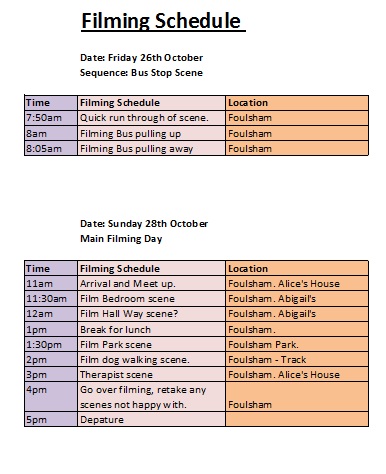(Joint Work with Abigail Fish)
Genre Research Statistics from 2010 - Secondary research
Genre:
In 2010 the highest grossing genre of film was Fantasy, followed by Science-fiction, Animation and then Romance. Thrillers were the ninth highest grossing films that year, averaging over £13,000 box office takings per site. The box office gross reached 19.3 million for thriller films in 2010. Fantasy was the highest grossing genre of film, because of the huge success of "Harry Potter and the Deathly Hallows Part 1". This shows that audiences are drawn to films which contain elements of fantasy, and also reaffirms the popularity of the Harry Potter series.

From the graph above we can see that the majority of independent films have a 15 certificate rating. 15 certificate independent films also grossed the highest. Approximately 56.6% of UK films have a rating of 12A. This is because, generally, 12A (family orientated) films appeal to a wider audience and therefore make more money.

The above table shows the highest ranking films/film genres in terms of gross box office. 20 thrillers were released in the UK in 2010, grossing at 19.3 million pounds. The thriller genre ranked 11th in the whole table (which contains 15 genres altogether), suggesting that either the genre has not been particularly popular recently, or perhaps that the films released under the thriller genre in 2010 were not as well-received as other films.
Audience Research statistics from 2010
From statistics in 2010, the average age group to attend the cinema was 15-34 years old. 30% were from the 15-24 age group and the other 20% were from the 25-34 age group. The lowest age group with 8% attending the cinema were 45-54 year olds. The increase in attendance from the 15-24 year old age group could be attributed to this age group socialising more, and going out more often. 18% of cinema goers are in the age group of 7-14 year olds. This is because young children need to be accompanied by an adult and don't tend to go alone or with friends, especially at the ages 7-13.
Gender Audience Research:
61% of cinema goers who went at least once a year were male and 62% were female. More males go to the cinema at least once a month than females, and an average of 19% overall go to the cinema at least once a month.
The tables above show which films released in 2010 had a predominantly female or male audience. The third table shows the films for which audience gender was not significant. More females seem to have attended 'girly' films which involve romance. Where as males attended films which contained action, violence and a bit of comedy.
It is a surprise to see that 80% of people watch films on TV then owning them on DVD. 4% go to the cinema which is once again very surprising but the prices are probably a deterrent especially due to the current economic climate.
One of the top thriller films is The Ghost in 2010 with 12 releases and 8.33% total box office, ranked 5th in UK Independent films.
Thriller needs to:
Appeal to both genders
Invite Thriller lovers
Action, Fantasy and Romance = Wide audience range
Rotten Tomatoes (Own research)
The Dark Knight Rises received a positive reception. This is due to the 3rd of a trilogy and of course batman fans will want to see it. Batman does appeal to more males in general and the once again basic plot line (stereotypical superhero) which could be the cause to why the percentage on the "tomatometer" is lower than for Looper. The target audience rules out females with some exceptions due. I think the focus is of Batman being well known and it being the 3rd in a trilogy makes the film more of a "big deal" than other thrillers.
Looper has the highest meter rating due to a better plot line than Batman. The comments by critics are positive and gives you all the good points about the film. Less audience liked it, maybe due to the genre and the gender clash. More males maybe liked it, like in Batman which lowered the audience.
The ratings aren't as high but this could be caused by the plot line of characters. It focuses around a teenage girl which would lower the appeal for males. Even though some people are in denial, more of a male cast is more successful. The plot line also is predictable which would lower the reviews.


























